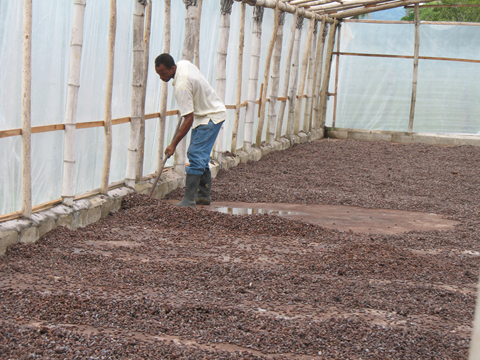Nature's Manufacturer of the "Food of the Gods!"
Not many people stop to think about what they're really eating when they lick clean their bowl of chocolate ice cream. If you asked someone what chocolate was made of, they would probably say "chocolate?" or if you're lucky "cocoa beans?". But how do those bitter cacao seeds turn into the smooth, sweet chocolate of your favorite candy bar? The answer will probably surprise you!
The chocolate-making process begins when farmers cut down ripened pods and after a couple of days, split them open to reveal pulp and seeds. The beans and pulp are then transported to large wooden containers where the secret ingredient is added...fungi! Yeasts (the unicellular forms of fungi) are added to the containers to ferment the contents, removing the bitter flavor and changing the beans from a purple to brown color. There are two fungi responsible for this process. One is Candida krusei and the other is Geotrichum. (Learn all about these chocolate chefs at www.tomvolkfungi.net) Candida krusei kills the seed embryo, produces the smell of chocolate and eliminates some of the bitterness. Geotrichum, on the other hand, breaks down the pulp and also removes bitterness. Together these fungi make two great top chefs!
|
After fermentation, the beans are laid out to be dried and then ground up into powder. At this point chocolate can either be made into hot chocolate or proceed on to be made into a different product, like a candy bar. If the latter is to be achieved, the powder is mixed with sugar and varying amounts of cocoa butter at high temperatures. This is done for about 24 hours before cooling the chocolate and setting it in molds to create all of the trademark shapes of different brands. The amounts of specific ingredients range from company to company, so every chocolate is unique! |
![]()
![]()
![]()
![]()
![]()
![]()
![]()
![]()
![]()
![]()
![]()
![]()
![]()
![]()
Copyright © 2007, Design by: Sunlight webdesign

